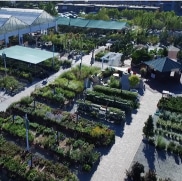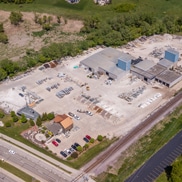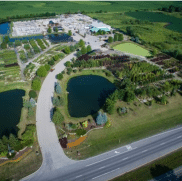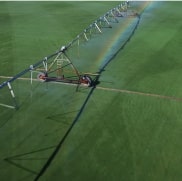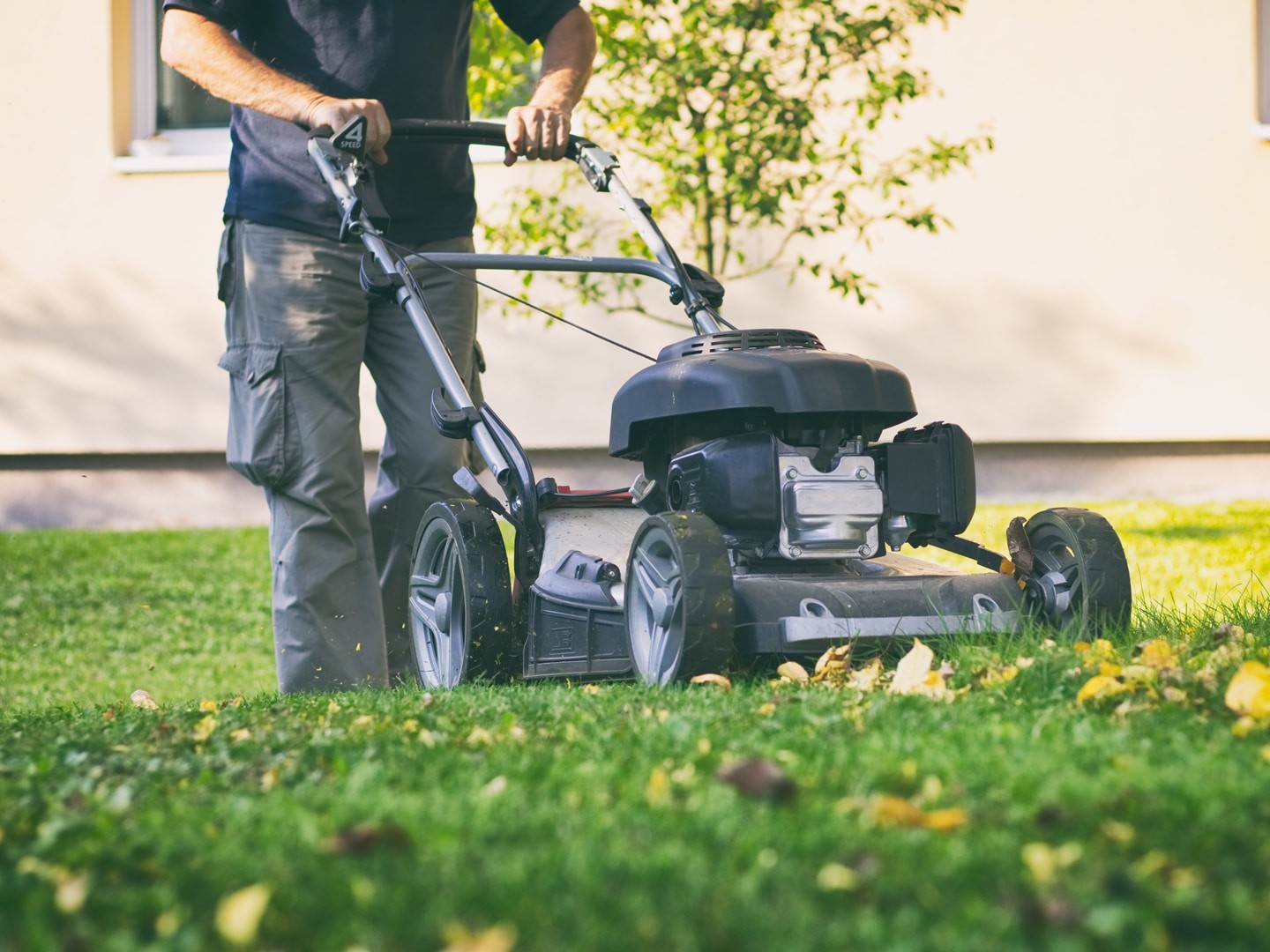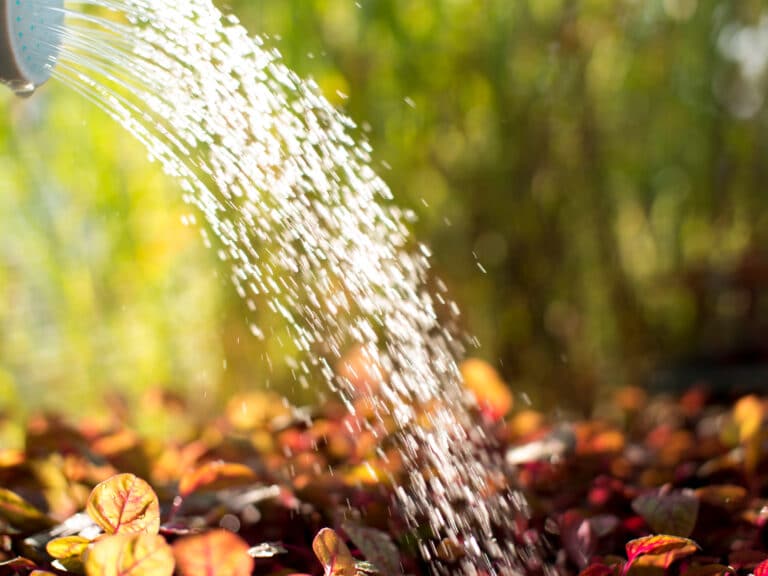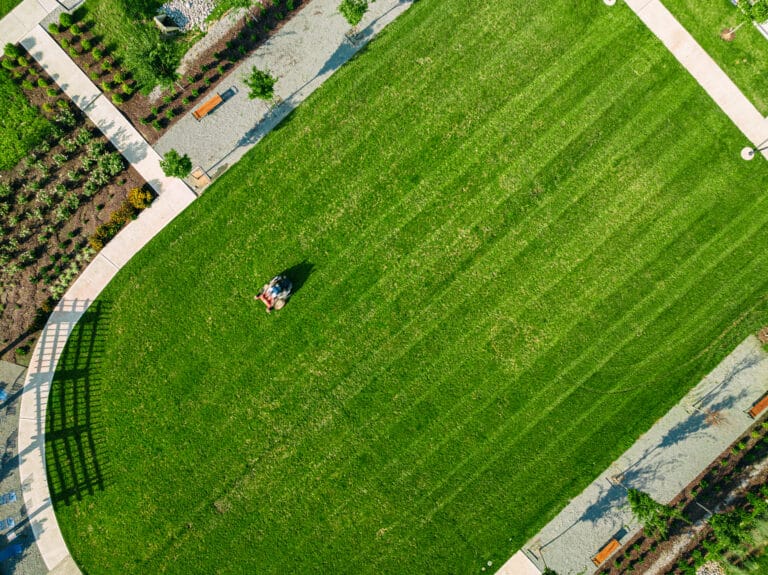As summer’s warmth wanes and the leaves take on their vibrant hues, it’s time to shift our focus to fall lawn care in Chicagoland. This transitional season provides a crucial window to prepare your lawn for the harsh winter ahead and ensure its health and vitality come spring. With a little extra attention and effort, you can transform your outdoor space into a lush haven that will be the envy of the neighborhood. In this comprehensive guide, we’ll walk you through essential fall lawn care tips and techniques, tailored to the unique climate and conditions of Chicagoland.
Fall Maintenance
Raking and Aeration
Fall is synonymous with falling leaves, and while the sight might be picturesque, it’s crucial to keep your lawn free of excessive leaf debris. A thick layer of leaves can smother your grass, leading to mold and disease issues. Regular raking or using a mulching mower to shred leaves into fine pieces that decompose quickly can make a significant difference.
Additionally, you should consider aerating your lawn. Aeration involves perforating the soil with small holes, called core aeration, to allow air, water, and nutrients to penetrate deeper. In the Midwest, where the soil can be heavy and compacted, it helps to loosen the soil and improve drainage, which is important for healthy root growth and improves overall lawn resilience. Aerating your lawn in the fall will help it to better withstand the stresses of winter.
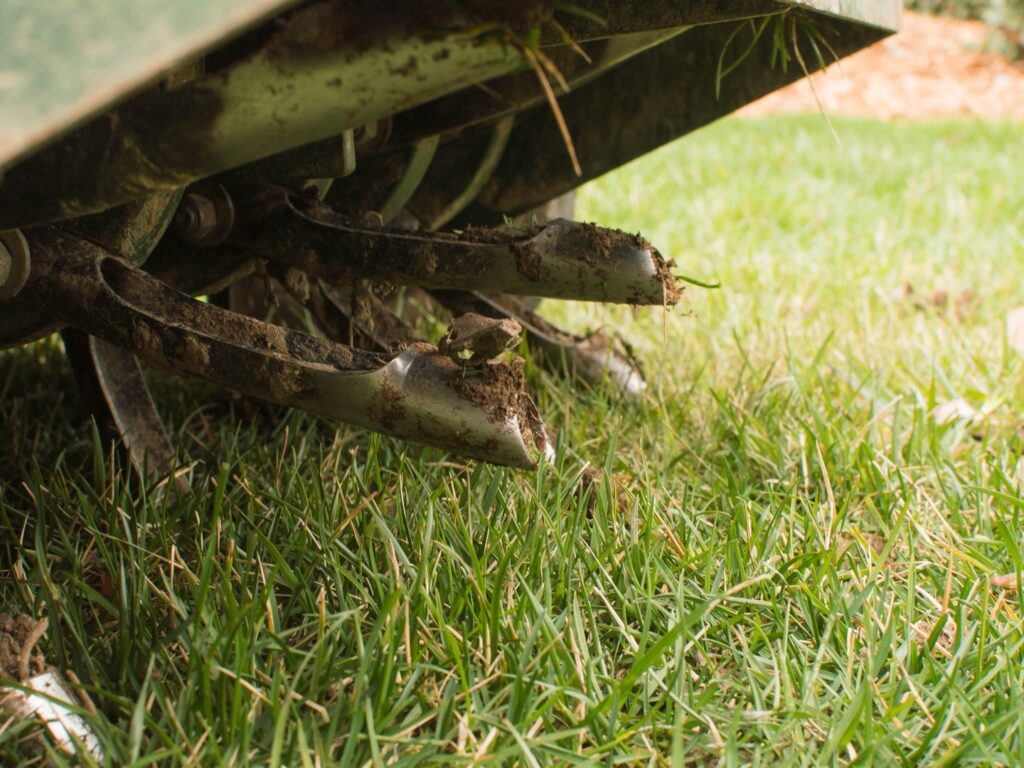
Overseeding
If your lawn is thin or patchy, overseeding in the fall is a great way to thicken it up and improve its overall appearance. Overseeding involves spreading grass seed over existing turf to fill in thin areas, increase density, and introduce new grass varieties. Cooler temperatures and reduced weed competition during fall provide an ideal environment for new grass to establish itself before winter.
How often should you overseed your lawn?
The frequency of overseeding depends on the condition of your lawn. If your lawn is thin or patchy, you may need to overseed it every year. However, if your lawn is in good condition, you may only need to overseed it every 2-3 years.
How to overseed your lawn:
If you are hiring a professional to overseed your lawn, there is not much you need to do! However, if you are overseeding your lawn yourself, there are a few things you need to keep in mind.
- Before overseeding, consider fertilizing your lawn with a balanced, slow-release fertilizer like 12-12-12 All Mineral from Andersons or New Lawn Starter 20-27-5. The nutrients will help support root growth and provide essential elements for your grass to thrive throughout the winter months.
- Prepare your lawn for overseeding. Mow your lawn short before overseeding. This will help to ensure that the seed has good contact with the soil.
- Overseed your lawn in a grid pattern. This will ensure that the entire lawn is overseeded evenly.
- Lightly rake the seed into the soil. This will help to ensure that the seed is not blown away by the wind or eaten by birds.
- Water the lawn thoroughly. This will help the seed germinate.
Address Bare Spots
Fall presents a great opportunity to address bare spots in your lawn. Before applying seed to bare areas in your lawn, prepare those areas by loosening the soil, adding a thin layer of compost, and then applying grass seed. Keep these areas consistently moist until the new grass becomes established.
Mowing Practices
As fall sets in, gradually lower your mowing height. Taller grass can mat down under snow cover, creating an environment conducive to disease. However, avoid removing more than one-third of the grass height in a single mowing session to prevent stress on the lawn.
In our area, aim to keep your grass at around 2 to 2.5 inches in height during the fall. This length provides a good balance between protecting the grass from winter stress and still maintaining an aesthetically pleasing appearance.
Irrigation
As fall brings cooler temperatures and increased rainfall, you’ll likely need to adjust your irrigation schedule. Monitor the weather and rainfall, and adjust your watering routine accordingly. Overwatering can lead to disease issues, so aim for deeper, less frequent watering sessions to encourage healthy root development.
Plant Health Care
Weed Control
Fall is an excellent time to tackle persistent weeds in your lawn. As many weeds are preparing for winter, they’re more susceptible to herbicides. Depending on the number of weeds in your turf you have the option to spot treat weeds with appropriate herbicides or choose to treat all of your turf with a Weed & Feed, including 22-0-4 with Trimec and 22-0-16 with Dissolve. Remember to always follow label instructions carefully to avoid harming your grass or the environment.
Fertilization
Fall is a great time to fertilize your lawn in the Midwest. The cool temperatures and moist soil help the fertilizer to be more effective, and the nutrients will help your lawn to stay healthy and green all winter long.
What should you look for in a fall fertilizer?
When choosing a fertilizer for your lawn in the fall, look for one that is high in nitrogen and phosphorus. One option would be 22-0-3 Slow Release. Nitrogen helps the grass to grow, and phosphorus helps the roots to grow strong. You may also want to choose a fertilizer that contains potassium, which helps the grass resist cold weather damage.
When is a good time to fertilize your lawn in the fall?
The best time to fertilize your lawn in the fall is in early September, typically around Labor Day. This will give the fertilizer time to work its way into the soil and be absorbed by the grass before the ground freezes.
How should you apply fertilizer to your lawn?
You can apply fertilizer to your lawn yourself using a broadcast spreader or a drop spreader. The amount of fertilizer you need to apply to your lawn will depend on the size of your lawn and the type of fertilizer you are using. Be sure to read the instructions on the fertilizer label carefully and follow them carefully. You should also wear gloves and eye protection when applying fertilizer.
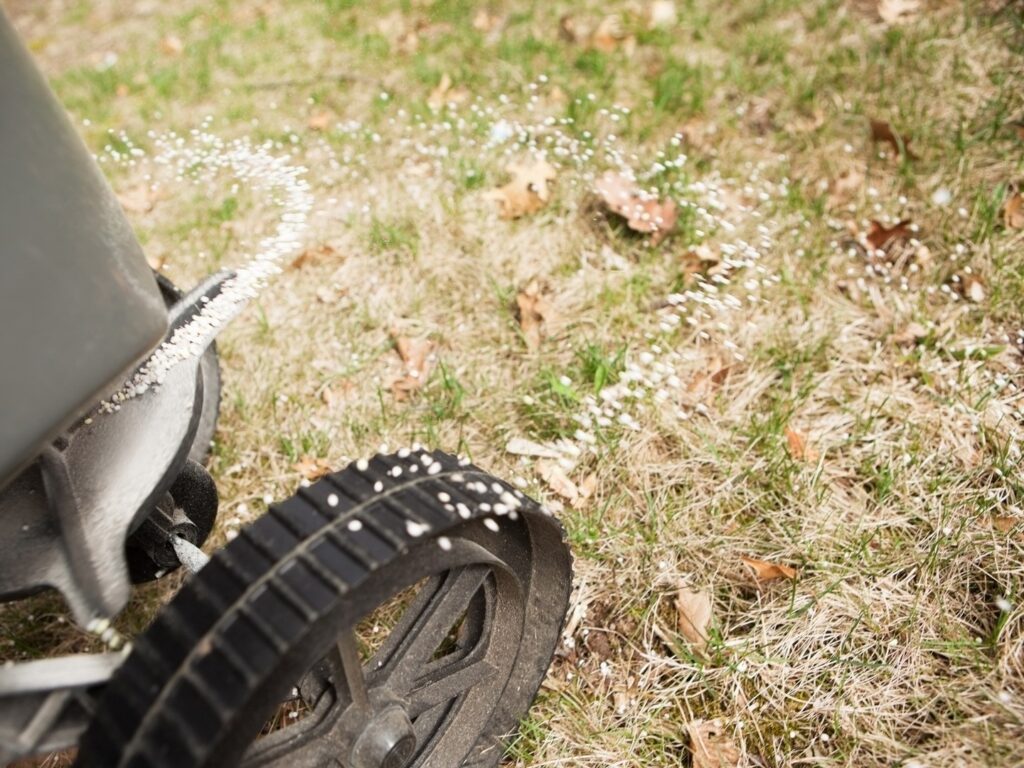
Don’t forget to water your lawn after fertilization!
It is important to water your lawn thoroughly after you fertilize it. This will help the fertilizer to dissolve and be absorbed by the grass.
Pest Prevention
While pests might become less active in the fall, it’s still important to be vigilant. Grubs and other lawn-damaging insects can wreak havoc on your grass, particularly during their feeding stage in the fall. Consider applying a preventive insecticide like Duocide 24-Hour Insect Control to keep these pests in check and protect your lawn from potential damage.
Before The Cold Sets In
Here are some additional tips to consider before the cold of winter arrives:
To Dethatch or Not Dethatch Your Lawn
If you live in an area with a lot of snow, for example, a lot of lake effect snow, you may want to consider dethatching your lawn in the fall. This will help to remove dead grass and thatch, which can trap moisture and lead to lawn diseases.
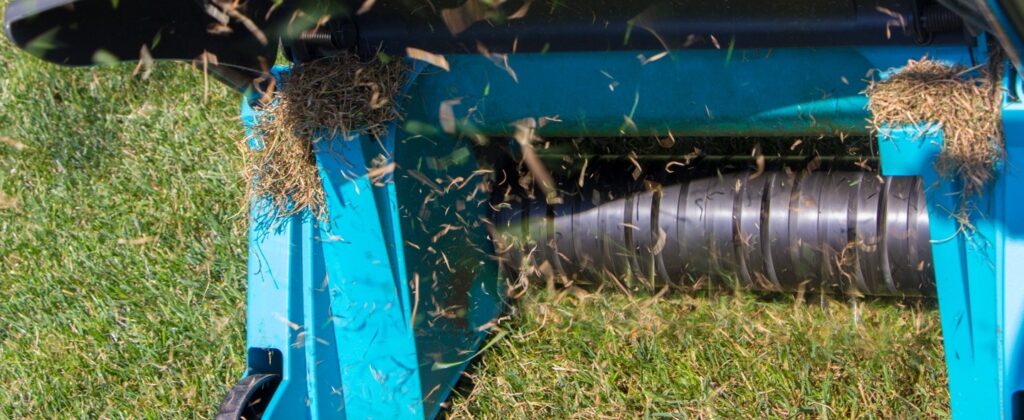
Prep Your Irrigation System
If you have a sprinkler system, make sure to flush it out in the fall to remove any debris that may have built up over the summer. This will help to prevent your sprinkler system from freezing in the winter and make sure it’s ready to tackle next spring.
Lawn Winterization
Before the first frost arrives, give your lawn a final feeding. Applying a winterizing fertilizer in late fall will give your grass the nutrients it needs to endure the cold months. These fertilizers are formulated to promote root growth and energy storage, ensuring your lawn’s resilience during winter dormancy.
Fall is a pivotal time for lawn care in Chicagoland. By following these essential tips, you can ensure your lawn is well-prepared to weather the challenges of winter and emerge even more vibrant and lush in the spring. Hit the ground running next spring and all season long, with our guide on Year-Round Lawn & Garden Care: The Best Fertilizer Options.
From raking leaves to fertilization and overseeding, each step contributes to a healthier, more resilient lawn that will be the pride of your neighborhood. Embrace the opportunity to give your outdoor space the attention it deserves, and you’ll reap the rewards of a beautifully maintained lawn year-round.


